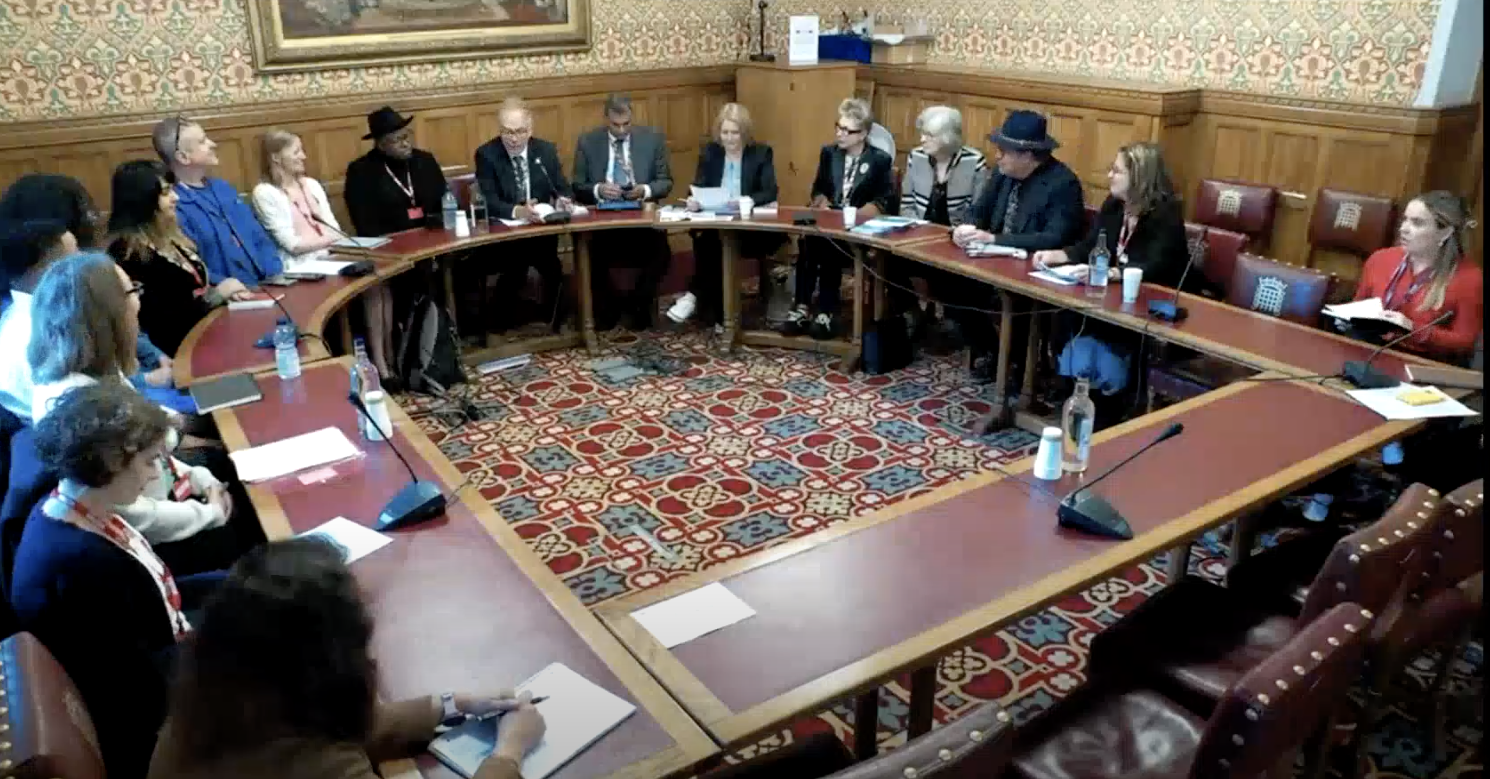Arts and Minds: capturing the impact of the arts on the mental health of young people in CAMHS in Wales
10/06/2025 | Author: Rosie Dow
By Rosie Dow, Freelance Evaluator for Arts and Minds
Image: via National Centre for Creative Health
The arts and young people’s mental health is having a moment.
Which is both a good thing, and a bad thing.
Bad, because we know that 1 in 4 young people have a mental health issue, and this is double the rate or 10 years ago.
Bad, because there’s been a 20-fold increase in people aged 17–19 being diagnosed with an eating disorder in six years (yes, you read that correctly).
Bad, because NHS Children and Adolescent Mental Health Services (CAMHS) across the UK are at breaking point, with increasing referrals, challenging budgets and 40% of CAMHS referrals being closed without treatment.
And bad, because with all that we know young people must deal with nowadays we clearly still aren’t identifying mental health issues soon enough to stop them escalating into more serious issues.
So, what’s the good news?
The good news is that artists and arts organisations are now more than ever, I think, recognising how much they can offer to young people when it comes to their mental health. This is leading to some amazing programmes where artists are working with the NHS to offer arts activities to young people who need that bit of extra support, and who might benefit from a less traditional, more creative approach.
The very good news is that one of the UK’s most important programmes in this space is happening right here in Wales, where six of our Health Boards and NHS Trusts are bringing artists into the heart of their CAMHS services, in the Arts Council of Wales and Baring Foundation’s pioneering Arts and Minds initiative.
The Arts and Minds programme has been running for nearly four years now, but it’s only this year that the Arts Council of Wales and the Baring Foundation have decided to focus the programme on CAMHS. They decided to do so because the Health Boards themselves identified CAMHS as a high priority across Wales and saw a collective opportunity to have a national impact on one of our most entrenched and wicked challenges.
As the evaluator on this programme, this presents an amazing opportunity, not just to learn about the impact of bringing arts into CAMHS services, but also to discover how this sort of work can be embedded in the NHS long term to provide young people with the more holistic, personalised approach to their mental health that we know they all need.
Creative Ways to Wellbeing for young people
But how to measure the impact? Clearly, mental health is a complex area, wellbeing even more subjective, and working with young people adds another layer of challenge. So, we had to think very carefully about how to capture impact in Arts and Minds.
After going round the houses on validated scales and questionnaires, we decided to create something bespoke: the Creative Ways to Wellbeing scale. In this scale, we have identified six domains (indicators) of wellbeing for young people and we will ask the young people to say how much they feel they are doing them, on a scale of 1-5, both before and after taking part in the arts projects.
The Creative Ways to Wellbeing domains are essentially the evidence-based five ways to wellbeing - connection, being active, being kind, learning and taking notice - with a sixth added: enjoyment. We have done this because:
- we believe these are things that young people will understand and relate to;
- some of the Health Board teams used them to design their Arts and Minds projects; and
- we believe (hope) these articulate the benefits young people will receive from engaging with the arts.
We are offering different ways for young people to answer the questions, including an MS forms questionnaire, a simple paper version, or a colourful wheel to make it more visually engaging.

We hope around 100 young people will complete the scales before and after taking part in an arts project, and we’ll also be doing a process evaluation and case studies using qualitative data and the Creative Health Quality Framework on top of meta-analysing the individual project evaluations. Results should be published in early 2026 - watch this space.
Beyond Wales: building evidence
The other good news is that beyond Wales we see lots of excellent research and evaluation now being undertaken which tells us the story of what’s going on when young people engage in the arts, and the impact this engagement can have.
And people are taking notice.
The All-Party Parliamentary Group on Arts and Health in Westminster recently hosted an entire meeting focusing on the arts and young people’s mental health, with MPs, House of Lords representatives, senior NHS professionals and cultural leaders hearing about example of many inspiring projects in this space including Hywel Dda’s Arts and Minds project in CAMHS, Arts Boost.
At that session Professor Daisy Fancourt from UCL gave an amazing talk about her team’s research in this area and the many large-scale trials she’s now conducting into arts and social prescribing for young people in CAMHS.
Daisy also told us about the mechanisms by which arts can support young people’s mental health, helping young people to be more aware of their feelings, to rehearse resilience, to build more positive relationships and increase self-esteem.
UCL’s analysis of cohort study (population sample) data reveals the impact of this: young people who engage in arts and culture have fewer behavioural problems in adolescence, display more positive health behaviours and fewer antisocial behaviours, and display less hyperactivity.
These factors are surely crucial to young people’s life chances, and the research supports this too: indeed Daisy told us in that meeting that the young people attending a drama group in a young offender’s institute were 50% less likely to reoffend than their counterparts who hadn’t been offered the intervention. So, the benefits stretch far beyond the individual and reach right into the heart of our society.
(Thanks also to Daisy for the above, stark statistics about the current state of play in the UK with young people’s mental health).
Have hope
If, as a nation, we really want to protect and support the wellbeing of our future generations - and clearly, we have a long way to go to achieve that - most of us instinctively know that arts and culture have a crucial role to play. Indeed our Wellbeing of Future Generations Commissioner has said as much in his call for a Culture Bill.
Yes, the statistics are depressing. The trends are bad.
But the work that’s happening to make things better for young people, using arts and creativity, is really, really good. And that should give us hope - after all, isn’t that what arts and creativity are all about?

